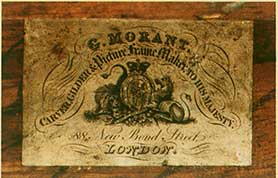A Note on Sir Thomas Lawrence’s Frames
Sir Thomas Lawrence (1769 – 1830) George IV, 1822
Courtesy of the Trustees of The Wallace Collection, London
“The finest picture shown without an appropriate Frame loses a great advantage as on the other hand it sustains material injury from a frame injudiciously selected”, wrote Sir Thomas Lawrence on 13th October 1828 in reply to his patron Mrs Gott who had written suggesting that the frames he had ordered for the portraits of Mr and Mrs Gott should be much narrower than his usual pattern. Lawrence assured her, “The pattern has been selected by me and its dimensions determined solely with a view to the advantage of the pictures”.
This correspondence regarding the framing of the pair of portraits which he describes as, “Two of the best that I have ever painted”, exemplified the lengths that Lawrence often went to in the latter part of his career to ensure the best appearance of his pictures.
He specified that the breadth of the mouldings for the Gott pictures should be nine inches and that, “Less than six would I am certain be injurious to the Pictures.” However, he conceded over the width of the moulding and in his next letter of 26th November he remarks, “I shall now only pray that the other pictures be brought up close to them, so that the effect of greater breadth of gilding may still be retained”.
From 1822 the name of George Morant and Sons appears in the Lawrence accounts for making frames. Their trade card lists their activities as “House Decorators, Carvers, Gilders and Picture Frame Makers To His Majesty” and whilst there is no evidence that Lawrence designed his own frames, the firm of Morant produced three or four frame patterns of varying moulding widths of which Lawrence approved and ordered regularly. He stated that, “A good frame should be sufficiently broad and rich, but the ornament of the richness composed throughout of small parts, and usually it should be unburnished”.
The ornament, French in taste and derived from Régence frame patterns, was cast in composition from carved boxwood moulds.
Boxwood mould, circa 1815, carved in reverse. Acanthus leaf ornament for the mitre of picture frames.
Collection Arnold Wiggins & Sons
A contemporary recipe for “compo” is given in The Decorators Assistant, May 1847, “To make compo ornament for picture frames &c – boil the seven pounds of the best glue in seven half-pints of water; melt three pounds of white resin in three pints of raw linseed oil. When the ingredients are well boiled, put them into a large vessel and simmer them for half-an-hour, stirring it, and taking care it does not boil over. When this is done, pour the mixture into a large quantity of whiting (previously rolled and sifted very fine), and mix it to the consistence of dough, and it is ready for use”.
Lawrence preferred his frames to be oil gilded, desiring the effect of dull matt gold close up to the picture. It also had the advantage of being more durable and easier to clean, a convenience remarked on by The Marquis of Abercorn writing to Sir Thomas Lawrence on 16th November 1812, ‘Lady Abercorn wishes Lady Caroline Campbell’s picture frame to be of oil gold for the sake of cleaning and preserving, I think she is right in as much as our friends think it the best for the painting”.
English, c. 1823, gilded frame with composition ornament in the French Régence taste, with original matt oil gilding.
Changes in taste and interior decoration, and the relocation of pictures, meant that many paintings were reframed to suit their new context. Two of Lawrence’s “Bishops length” portraits, that were later reframed, interestingly document this changing taste in framing. The portrait of Henry Lascelles, 2nd Earl of Harewood MP, 1823, hanging in Harewood House, Yorkshire, and that of King George IV, 1822, now hanging in the Wallace Collection, which were given the same pattern of frame described in Morant’s account to “His Most Gracious Majesty” dated 26th February 1824, as, “an extra large richly ornamented frame for a whole length Portrait of His Majesty seated on a sofa – sent to the Marchioness Conyngham £46-10-0”, a standard price for such a frame.
It was during the extensive remodelling of Harewood House by Sir Charles Barry, from 1843-1850, that the portrait of Henry Lascelles was reframed in the same pattern as a number of other pictures in the dining room.
Sir Thomas Lawrence, Henry, 2nd Earl of Harewood 1823. Harewood House, State Dining Room.
The portrait of George IV was removed from its frame and installed in panelling in the Front State Room at Hertford House, Manchester Square, shortly after its purchase by Sir Richard Wallace in 1883. This positioning would not have pleased Lawrence who in 1818 expressed his concern to the Duke of Wellington who similarly intended to fix his portraits of Lord Lynedoch and Lord Bathurst in panelling.
“I will order such temporary frames for the pictures as your Grace has mentioned; but you must forgive me for expressing my hope that they will hereafter be plac’d in gilt frame, rather than fix’d in panels of the room; the latter being as unfavourable to Pictures as the former, from long experience, are proved to be advantageous”.
The Great Gallery at the Wallace Collection
The portrait of George IV had been in need of a frame since it was re-hung in the Great Gallery in just the narrow gilded inner slip, surviving from its original frame. The opportunity arose for the picture to be returned to a frame of the pattern originally chosen by Lawrence when the discarded frame from the portrait of Henry Lascelles, having been carefully stored since 1843 in the Carpenters’ Store, was acquired by Wiggins at the 1988 Harewood House Sale. The frame was acquired from Wiggins by The Wallace Collection in 2005.
The reframing of pictures in earlier periods and the survival of those frames that were thought no longer fashionable means that historically appropriate frames can be found for paintings today.
Maker’s label: on reverse, George Morant, Carver, Gilder and Picture Frame Maker to His Majesty, 88 New Bond Street, London.
Founded in 1790 at 88 New Bond Street, London, the firm G Morant was described as a “Paper Hanging Warehouse”. By 1819 their activities were listed as “Ornamental Painter and Paper Hanging Manufacturer”, and by 1823, they had added carver, gilder and picture frame maker. Morant supplied frames to George IV for the New Corridor at Windsor Castle; included on the bill dated 20th November 1823, £25.10s. “A richly ornamented frame for a Bishops half length portrait of Mr Pitt for Windsor Castle”, whilst in April 1827 George IV was billed £30 for “A bold, richly ornamented frame” to go around the portrait of Sir Walter Scott.
Michael Gregory
The Wallace Collection
Hertford House, Manchester Square, London W1U 3BN
Harewood House
Harewood, Leeds LS17 9LG






